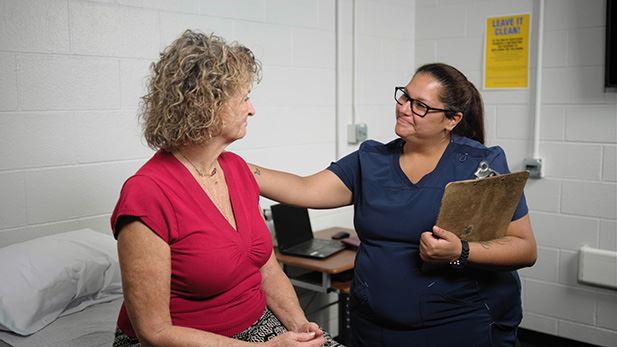

Library > Professional Skills > MA Professional Skills > MA Communication
Try Simtics for free
Start my free trialMA Communication NEW

Effective communication is a vital skill for medical assistants and is the basis for successful patient care. Medical assistants must be able to communicate medical information professionally and accurately with a diverse group of people. This module provides knowledge in understanding the various types of communication styles and how to communicate with patients, co-workers, providers, and non-patients, including verbal, nonverbal, and written communication forms.
You’ll learn
- how to communicate in both the front and back office
- techniques for active listening
- essential nonverbal and verbal communication skills
- best practices for professional communication
- much more (see Content Details for more specific information)
- Identify how to communicate with patients in the front office.
- Identify how to communicate with patients in the back office.
- Apply professional communication techniques when speaking to patients on the telephone.
- Develop an effective communication style utilizing body language.
- Communicate in written form.
- Restate patient communications to demonstrate understanding.
- Apply listening skills in a role-play or simulation exercise.
- Analyze their communication skills for areas of improvement.
- Relate to co-workers using effective communication skills.
- Demonstrate effective communication with a provider.
The SIMTICS modules are all easy to use and web-based. This means they are available at any time as long as the learner has an internet connection. No special hardware or other equipment is required, other than a computer mouse for use in the simulations. Each of the SIMTICS modules covers one specific procedure or topic in detail. Each module contains:
- an online simulation (available in Learn and Test modes)
- descriptive text, which explains exactly how to perform that particular procedure including key terms and hyperlinks to references
- 2D images and a 3D model of applied anatomy for that particular topic
- a step by step video demonstration by an expert
- a quiz
- a personal logbook that keeps track of all the modules the learner has studied and how long
For more details on features and how your students can benefit from our unique system, click here.





